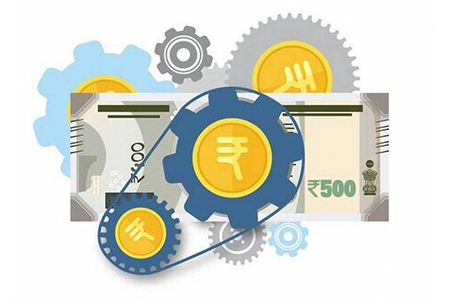Poor people are running from pillar to post as the Aadhaar payment bridge routinely obstructs their welfare benefits
Perhaps you will remember “l’affaire Airtel” — the mass diversion of LPG subsidies to Airtel wallets that came to light in 2017. Many of the wallets were unwanted, or even unknown to the recipients. Those affected, fortunately, included millions of middle-class Airtel customers who protested when the goof-up emerged. The subsidy money was returned, Airtel was fined by the Unique Identification Authority of India (UIDAI), and the world moved on.
 This is an instance of what might be called “diverted payments” — bank payments being redirected to a wrong account, without the recipient’s consent or knowledge. What has escaped attention is that diverted payments have become a widespread problem in recent years, not so much for the middle class as for powerless people such as old-age pensioners and Mahatma Gandhi National Rural Employment Guarantee Act (MGNREGA) workers. The main culprit is the Aadhaar Payment Bridge System (APBS).
This is an instance of what might be called “diverted payments” — bank payments being redirected to a wrong account, without the recipient’s consent or knowledge. What has escaped attention is that diverted payments have become a widespread problem in recent years, not so much for the middle class as for powerless people such as old-age pensioners and Mahatma Gandhi National Rural Employment Guarantee Act (MGNREGA) workers. The main culprit is the Aadhaar Payment Bridge System (APBS).
Shaky foundations
The basic idea of the APBS, an offspring of the National Payments Corporation of India (NPCI), is that a person’s Aadhaar number becomes her financial address. Instead of having to provide multiple account details (say, her name, bank account number and IFSC code) to receive a bank transfer, she only has to provide her Aadhaar number.
Induction of a bank account into APBS involves two distinct steps, both of which are meant to be based on informed consent. First, the account must be “seeded” with the customer’s Aadhaar number. Second, it must be connected to the NPCI mapper — a step known as “mapping”. In cases of multiple accounts for the same person, the APBS automatically sends money to the latest-mapped account.
To understand the dangers of this “bridge”, we must rewind to 2014, when the Jan Dhan Yojana (JDY) was launched. In the frantic drive that followed, millions of bank accounts were opened and seeded with Aadhaar in a haphazard manner, under relentless pressure from the Central government. Some JDY accounts certainly served a purpose, but many others were superfluous and created a confusing multiplicity of accounts. More importantly for our purpose, Aadhaar numbers were seeded into these accounts without proper verification.
Given short shrift
Haphazard seeding continued well beyond 2014 because the government wanted to bring all direct benefit transfer (DBT) payments — pensions, scholarships, subsidies, MGNREGA wages, and so on — under the Aadhaar payments umbrella. Government departments started sending bulk lists of bank accounts and Aadhaar numbers to the banks for accelerated Aadhaar seeding. Meeting the seeding targets was the top priority and due verification, once again, took the back seat. Thus the groundwork required for APBS to work — reliable seeding of bank accounts with Aadhaar — had simply not been done when the APBS was rolled out. The seeding mess, it seems, was sought to be cleaned up by making “e-KYC” compulsory. This essentially means that account holders were required to go through biometric authentication to verify their Aadhaar number and identity information. To enforce e-KYC, many banks used the “ultimatum method”: a deadline was set, and people’s accounts were blocked when they missed the deadline.
Compulsory e-KYC became a nightmare for poor people, for a number of reasons: some did not know what they were supposed to do, others had problems of biometric authentication, others still struggled with inconsistencies between the Aadhaar database and the bank database. Among the worst victims were old-age pensioners. To this day, in Jharkhand, many pensioners are struggling to understand why their pension was discontinued after e-KYC was made compulsory.
A risky bridge
So far so bad. But there is worse: without waiting for the seeding mess to be cleaned up, the APBS was forced on millions without consent. Mapping (the induction of an Aadhaar-seeded account into the APBS), according to NCPI and UIDAI guidelines, should be based on an explicit request from the customer. This gives a measure of protection to educated middle-class customers. It ensures, for instance, that they know which account their money is being directed to by the APBS. For poor people, however, consent is a fiction. In Jharkhand at least, bank accounts have been mass-mapped onto the APBS without any semblance of consent, with or without e-KYC being completed — in other words, without necessarily verifying that an account has been correctly seeded with Aadhaar.
READ THE REST OF THE ARTICLE HERE
